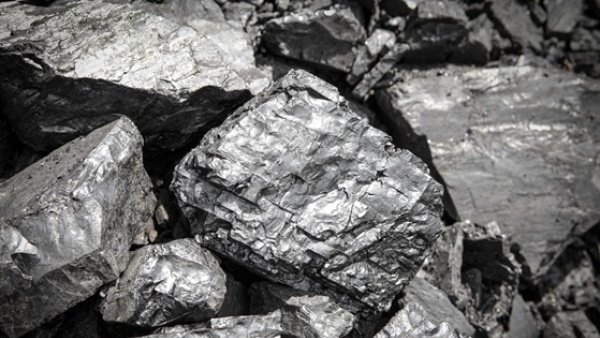Does Radiocarbon Dating Prove a Young Earth? A Response to Vernon R. Cupps
In my experience, one of the most persuasive scientific claims for a young Earth is the detection of carbon-14 in geological samples such as coal and fossilized dinosaur remains.1 According to young-earth creationists (YECs), if the coal samples and fossils are truly millions of years old (as the scientific community claims), then there shouldn’t be any trace of carbon-14 in these samples. Why? It’s because the half-life of carbon-14 is about 5,700 years, meaning that all the detectable carbon-14 should have disappeared from the samples long before they reach even 100,000 years of age.
In Dinosaur Blood and the Age of the Earth, I respond to this young-earth argument, suggesting three mechanisms that can account for carbon-14 in fossil remains (and by extension, in geological materials) from an old-earth perspective.
When YECs detect carbon-14, they find it at low levels, corresponding to age dates older than 30,000 years (not 3,000 to 6,000 years old, as their model predicts, by the way). These low levels make it reasonable to think that some of the carbon-14 signal comes from contamination of the sample by, say, microorganisms picked up from the environment.
These low levels also make it conceivable that some of the detected carbon-14 is due to a ubiquitous carbon-14 background. Cosmic rays are continuously producing radiocarbon from nitrogen-14. Because of this nonstop production, carbon-14 is everywhere and will show up at extremely low levels in any measurement that is made, even if it isn’t present in the actual sample.
It is also possible that some of the carbon-14 in the fossil and coal samples arises from the in situ conversion of nitrogen-14 to carbon-14 driven by the decay of radioactive elements in the environment. Because fossils and coal derive from once-living organisms, there will be plenty of nitrogen-14 contained in these specimens. For example, environmental uranium and thorium would readily infuse into the interiors of fossils, and as these elements decay, the high energy they release will convert nitrogen-14 to carbon-14.
Employing a “back-of-the-envelope” flux analysis, Vernon Cupps—a YEC affiliated with the Institute of Creation Research—has challenged my assessment, concluding that neither (1) the production of carbon-14 from cosmic radiation nor (2) the decay of radioactive isotopes in the environment is sufficient to account for the carbon-14 detected in fossil and geological samples.2
Though I think his analysis may be unrealistically simplistic, let’s assume Cupps’s calculations are correct. He still misses my point. In Dinosaur Blood and the Age of the Earth, I argue that all three possible sources simultaneously contribute to the detectable carbon-14. In other words, while no single source may fully account for the detectable carbon-14, when combined, all three can. Cupps’s analysis neglects the contribution of the ubiquitous background carbon-14 and possible sources of contamination from the environment.
Ironically, the low levels of carbon-14 detected in fossils and geological specimens by YECs actually argue against a young Earth, not an old Earth.
How can that be?
If fossil and geological specimens are between 3,000 and 6,000 years old, then somewhere between 50 and 75 percent of the original carbon-14 should remain in the sample. This amount of material should generate a strong carbon-14 signal. The fact that these specimens all age-date to 30,000 to 45,000 years old means that less than 2 percent of the original carbon-14 remains in these samples—if the results of this measurement are taken at face value. It becomes difficult to explain this result if these samples are less than 6,000 years old. On the other hand, the weak carbon-14 signal measured by YECs does make sense if carbon-14 does not reflect the material originally in the sample, but instead stems from a combination of (1) contamination from the environment, (2) ubiquitous background radiocarbon, and/or (3) irradiation of the samples by isotopes such as uranium or thorium in the environment.
To put it plainly, it is difficult to reconcile the carbon-14 measurements made by YECs with fossil and geological samples that are 3,000 to 6,000 years old, Cupps’s analysis notwithstanding.
On the other hand, an old-earth perspective has the explanatory power to account for the low levels of carbon-14 associated with fossils and other geological samples.
Resources
- Dinosaur Blood and the Age of the Earth by Fazale Rana (book)
- “Does Dinosaur Tissue Challenge Evolutionary Timescales? A Response to Kevin Anderson, Part 1” by Fazale Rana (article)
- “Does Dinosaur Tissue Challenge Evolutionary Timescales? A Response to Kevin Anderson, Part 2” by Fazale Rana (article)
Endnotes
- Vernon R. Cupps, “Radiocarbon Dating Can’t Prove an Old Earth,” Acts & Facts, April 2017, http://www.icr.org/article/9937.
- Ibid.
Subjects: Age of the Earth, Young-Earth Creationism
Check out more from Reasons to Believe @Reasons.org






